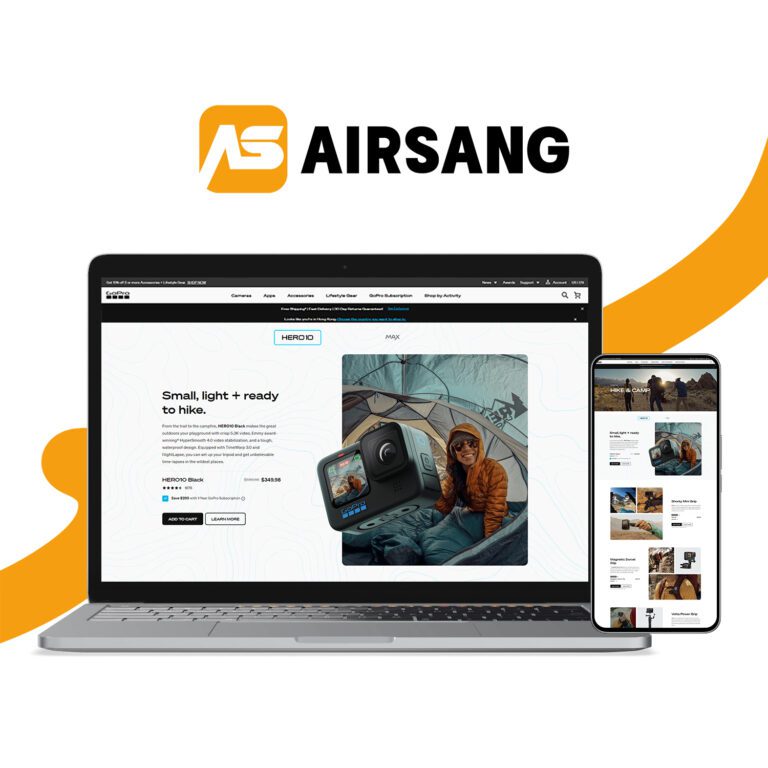Prioritize Core Web Vitals for UX & SEO Success
Just like vital signs reflect human health, Core Web Vitals show Google your website’s performance. With recent algorithm updates, they’ve become essential for SEO success. At Airsang Design, we break down what they are and how to improve them—so your site ranks better and runs smoother.

What Exactly Are Google’s Core Web Vitals?
To reduce subjectivity in defining a “good website,” Google introduced Web Vitals as measurable guidelines.
Core Web Vitals are the primary metrics to focus on—user-centered and field-measurable.
The three key Core Web Vitals are:
- LCP (Largest Contentful Paint): Measures page load speed for main content.
- FID (First Input Delay): Measures interactivity—how quickly a user can interact.
- CLS (Cumulative Layout Shift): Measures visual stability during page load.
Core Web Vitals: Key Metrics & Benchmarks
1. Largest Contentful Paint (LCP) – Loading Speed
- Measures time to load the largest visible content above-the-fold
- Target: Under 2.5 seconds for a “Good” score
2. First Input Delay (FID) – Interactivity
- Measures time from page load to when the user can interact
- Target: Under 100ms
3. Cumulative Layout Shift (CLS) – Visual Stability
- Measures how much content shifts unexpectedly while loading
- Target: Below 0.1
Examples of poor CLS:
- Clicking the wrong link due to content shift
- Losing reading position in a shifting article
- Image jumps and shows an ad instead
Poor scores don’t remove you from search results, but optimizing these metrics helps outrank competitors. At Airsang Design, we prioritize Core Web Vitals to ensure fast, stable, and user-friendly sites.
Why Core Web Vitals Matter for SEO and User Experience
Your website is a key revenue driver—but only if users can find it. Understanding and optimizing for Google’s Core Web Vitals helps boost visibility in search results while delivering a smoother user experience that drives conversions. Striking a balance between creative design and performance is essential for long-term success.
How can you check your website’s Core Web Vitals?
- Core Web Vitals are automatically tracked in Google Search Console via the Chrome UX Report (CrUX).
- Data is collected from real user visits (Field Data), and shown as metrics over time.
- Each website page is measured individually and visualized in performance graphs.
- Reports require enough traffic to generate data.
- Optimizations may not appear immediately, so use additional testing tools (e.g., PageSpeed Insights, Lighthouse) for quicker feedback.
What tools can you use to measure a website’s Core Web Vitals performance?
PageSpeed Insights (Google):
Runs from Google’s servers (Taiwan, US, Europe). May not reflect your user’s local experience.
Lighthouse (Chrome DevTools):
Built into Chrome’s DevTools, tests directly on your device.
🔍 Google uses mobile-first indexing—mobile scores are weighted more. Their tests simulate low-speed mobile (approx. 800 CPU, 1.6 Mbps, 150ms latency), so mobile-optimized sites perform better in rankings.
Ways to Enhance Your Website’s Core Web Vitals Performance
Boost Core Web Vitals with Smarter Hosting & Site Optimization
- Upgrade Hosting: Avoid cheap, slow hosts. Choose one near your audience. Recommended: Panthur (AU-based), WP Engine (managed WordPress).
- Site Improvements: Use plugins/services for Gzip, image compression, caching, and CDN. Try NitroPack for quick wins.
- Trim Plugins: Too many slow things down—especially page builders. Keep only essentials and consult your developer for cleanups.
Enhance media performance for faster load times
Optimize Visuals & JavaScript for Speed
Large images and videos slow sites down—use tools like Imagify, Optimole, TinyPNG, Clideo, or Veed.io to compress them. Always define width and height to avoid layout shifts (CLS).
Refine JavaScript
Heavy JavaScript often causes poor FID. Reduce unnecessary animations or scripts to improve interactivity.
Google Core Web Vitals Timeline Highlights:
- May 2020: Page experience proposed as ranking signal
- Nov 2020: HTTP/2 updates to Googlebot
- June–Aug 2021: Full rollout of Core Web Vitals
Conclusion
Core Web Vitals are just the foundation—like walls and a roof on a house. To truly rank, you’ll also need strong SEO fundamentals: keywords, title tags, meta descriptions, backlinks, and engaging design. At Airsang Design, we balance performance and aesthetics to help your site stay fast and win hearts. Google values speed and usability—so should you. While Core Web Vitals alone won’t guarantee the top spot, ignoring them can hurt your visibility.
















